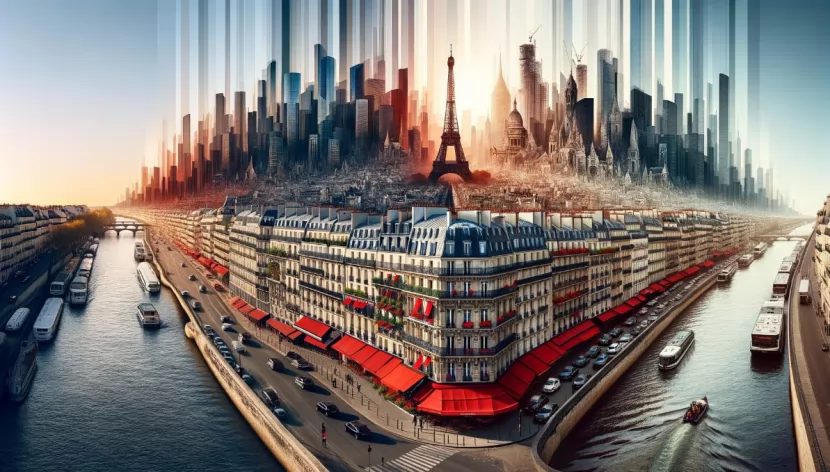The charm of traditional skylines of Paris intricate tin roofs, to the modern city of New York skylines lay in their resemblance to the wild contours of mountain ranges. These landscapes, molded by centuries of architectural evolution, echoed the organic complexity of nature itself. The old-world charm of such places was a testament to humanity’s desire to harmonize with the natural world, crafting settlements that felt like a continuation of the earth’s own artistry. As the modern era dawned, a shift towards modernism in architecture introduced stark, utilitarian structures, marking the rise of brutalist architecture. This movement, characterized by its simplistic, raw concrete forms, seemed to stray from the intricate dance with nature’s patterns. The beauty found in the mimicry of mountainous horizons appeared to be lost, replaced by a philosophy that prioritized function over form, a hard break from the past’s gentle curves and complex silhouettes. Yet, as cities like New York began to densely populate their skylines with towering skyscrapers, an unintended consequence emerged. The vast number of buildings, each fighting for space and light in the urban canopy, collectively began to recreate the chaotic beauty of natural landscapes. What at first glance appeared to be a jumble of concrete and glass, upon closer inspection, revealed a modern echo of the mountain ranges that inspired the earliest architects. This resurgence of natural chaos, seen in the mass assembly of skyscrapers, brought an unexpected return to beauty. The skyline of New York, with its myriad of towers, unknowingly paid homage to the very landscapes humanity once sought to emulate. This evolution of cityscapes around the world appealing to our eyes underscores a profound truth: in the pursuit of progress, we inadvertently circle back to the natural world for inspiration. The beauty of urban chaos, with its dense forests of steel and glass, reflects a modern interpretation of the mountain ranges that cradle our oldest cities. It suggests that, regardless of the era or architectural style, there is an inherent draw to mimic the chaotic yet harmonious patterns found in nature. As our cities continue to grow and transform, they remind us that beauty often emerges from mass and chaos, prevailing as a testament to the enduring influence of the natural world on human creativity.
Urban Elegance: The Unseen Beauty of City Skylines & Architecture

